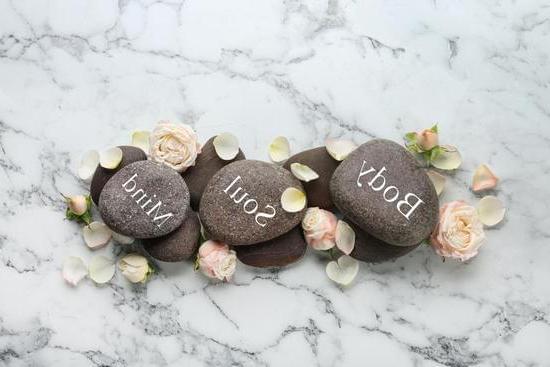The bedroom is a sanctuary for rest and relaxation, and according to Feng Shui principles, the choice of colors in this space can have a significant impact on energy flow and mood. Understanding the best bedroom colors based on Feng Shui can help create a harmonious and balanced environment that promotes well-being.
In this article, we will explore the importance of color in Feng Shui, from its influence on energy flow to its effect on creating a soothing atmosphere for better sleep and overall health. Whether you are looking to enhance the romance in your relationship or seeking to create a tranquil retreat, incorporating Feng Shui best bedroom colors can make a difference.
Color plays a crucial role in Feng Shui practices, as each color is believed to carry specific energies that can either support or disrupt the flow of chi within a space. In Feng Shui, the bedroom is considered one of the most important areas of the home, as it directly impacts personal well-being and intimate relationships.
By understanding how different colors resonate with the Bagua areas of the bedroom and considering individual preferences, it is possible to design a space that nurtures both physical and emotional aspects of life.
Furthermore, we will delve into the concept of yin and yang in bedroom colors, exploring how to achieve balance by incorporating complementary hues that represent masculine and feminine energies. We will also provide insights into creating a relaxing atmosphere with calming colors that promote tranquility while discussing colors that foster intimacy for those seeking to enhance their romantic lives.
Additionally, we will touch upon avoiding negative energy by identifying colors to steer clear of in order to maintain positive chi in the bedroom while still allowing for personal color preferences. Stay tuned as we uncover the secrets of using Feng Shui best bedroom colors to transform your sleep sanctuary into an oasis of harmony.
Choosing Colors Based on Bagua Areas
When it comes to selecting the best bedroom colors in Feng Shui, it is essential to consider the specific areas of the bedroom and how they correspond to different colors according to Feng Shui principles. Each area, or Bagua, of the bedroom represents a different aspect of life, and choosing the right color can enhance the energy flow and create a harmonious environment.
According to Feng Shui beliefs, different colors are associated with specific areas of the bedroom. By understanding these associations, you can use color to optimize the energy in each area of your bedroom. Some recommended colors for different Bagua areas in the bedroom include:
- Wealth and Prosperity (Southeast): Green, purple, or red
- Love and Relationships (Southwest): Pink, red, or white
- Health and Family (East): Green or brown
- Creativity and Children (West): White or pastel colors
- Knowledge and Wisdom (Northeast): Blue or purple
- Career (North): Black or navy blue
By considering these correspondences between colors and Bagua areas, you can strategically choose the best Feng Shui colors for each part of your bedroom. This approach can help create a balanced and harmonious atmosphere that supports different aspects of your life.
In addition to choosing colors based on Bagua areas, it is important to consider individual preferences and personal associations with certain colors. It is possible to integrate personal color choices while still adhering to Feng Shui principles. Ultimately, creating a harmonious environment in your bedroom involves both an understanding of traditional Feng Shui principles and a consideration of your own unique preferences.
Best Feng Shui Colors for Different Bedroom Layouts
When it comes to applying Feng Shui principles to the bedroom, understanding the ideal colors for different layouts and orientations is crucial. The energy flow in a room can be influenced by its layout and orientation, so choosing the right colors based on these factors can help create a harmonious and balanced environment. Here are some recommendations for the best Feng Shui colors for different bedroom layouts:
- For a bedroom with a North-facing orientation, consider using calming and soothing colors such as light blues, greens, or grays. These colors can enhance the flow of energy in this area and promote a sense of relaxation.
- South-facing bedrooms can benefit from warm and vibrant colors like reds, oranges, or yellows. These colors are believed to energize the space and create a welcoming atmosphere while promoting passion and vitality.
- East-facing bedrooms are associated with new beginnings and personal growth, making soft pastel shades of pink, lavender, or peach ideal choices. These colors can nurture positive energy flow and support personal development.
- For bedrooms with a West-facing orientation, earthy tones such as browns, terracottas, and pale yellows are recommended. These colors can evoke a sense of stability and grounding while fostering a sense of security in the space.
It’s important to take into account not only the cardinal direction of the bedroom but also its specific layout when choosing Feng Shui colors. Bedrooms with irregular shapes or unique architectural features may require additional considerations when selecting color palettes to ensure that the energy flow remains balanced throughout the space. By understanding how different layouts and orientations impact energy flow, individuals can select colors that support harmony and well-being in their bedrooms according to Feng Shui principles.
The Power of Yin and Yang in Bedroom Colors
The concept of Yin and Yang is an essential principle in Feng Shui, emphasizing the balance of energies within a space. This principle also applies to the choice of colors in the bedroom, where it is crucial to create a harmonious blend of masculine and feminine energies.
In Feng Shui, this balance can be achieved through the use of complementary colors that represent the duality of Yin and Yang. For example, pairing warm colors like red and orange with cool colors such as blue and green can create a sense of harmony and equilibrium in the bedroom.
According to Feng Shui principles, Yin energies are expressed through softer, more passive colors, such as pastels or muted tones, while Yang energies are represented by bolder, more active colors. Achieving a balance between these energies can contribute to a more serene and tranquil atmosphere in the bedroom. By incorporating both Yin and Yang colors into the bedroom decor, individuals can promote a sense of well-being and enhance the flow of positive chi throughout the space.
In addition to using complementary colors to achieve harmony, it is essential to consider personal preferences when selecting bedroom colors. Individuals should feel comfortable and at ease in their own space. Integrating personal color choices while maintaining balance between Yin and Yang energies is key to creating a peaceful environment that supports overall well-being.
| Feng Shui Principle | Explanation |
|---|---|
| Yin & Yang Balancing | Complementary colors create harmony between masculine (Yang) and feminine (Yin) energies. |
| Color Preferences | It’s important to integrate personal color choices while maintaining energetic balance. |
Creating a Relaxing Atmosphere
When it comes to creating a relaxing and soothing atmosphere in the bedroom, choosing the right colors is crucial. According to Feng Shui principles, certain colors have the ability to promote a sense of calm and tranquility, which can significantly enhance the overall energy flow in the space. By understanding the impact of colors on emotions and energy, you can create a restful and peaceful environment that supports relaxation and rejuvenation.
Calming Colors
In Feng Shui, calming colors are those that evoke feelings of serenity and relaxation. Soft blues, gentle greens, and tranquil pastels are often recommended for creating a peaceful atmosphere in the bedroom. These colors are believed to have a calming effect on the mind and body, helping to reduce stress and promote a sense of well-being. Shades of lavender and pale pink are also considered soothing colors that can contribute to a restful environment.
Soothing Elements
In addition to specific colors, incorporating natural elements into the bedroom can also contribute to a soothing atmosphere. Earthy tones such as soft browns, warm grays, and muted beiges can bring a sense of grounding and stability to the space. Wood furniture or décor items made from natural materials can further enhance the calming energy in the room.
Avoiding Overstimulation
When creating a relaxing bedroom environment, it’s important to avoid using overly bright or intense colors that may cause overstimulation. Vibrant reds, bold oranges, and bright yellows are considered energizing colors that may be too stimulating for the bedroom. Instead, opt for softer hues that promote relaxation and support restful sleep.
By carefully selecting calming and soothing colors for your bedroom based on Feng Shui principles, you can create an environment that nurtures peace and tranquility. These color choices can have a profound impact on your ability to unwind and recharge in this important space within your home.
The Best Colors for Romance
When it comes to creating a romantic atmosphere in the bedroom, Feng Shui principles suggest using colors that evoke passion, love, and intimacy. Red is considered the most powerful color for romance in Feng Shui, as it symbolizes good fortune, joy, and happiness.
In addition to red, pink is also associated with love and tenderness, making it an ideal choice for couples seeking to strengthen their bond. These colors can be incorporated through bedding, decorative accents, or wall paint to enhance the romantic energy in the bedroom.
In Feng Shui, the color of the walls plays an important role in determining the overall energy of the room. Warm tones such as deep reds, rich pinks, and burgundy can create a cozy and intimate ambiance in the bedroom.
For those who prefer a more subtle approach, soft shades of pink or peach can still promote romance while maintaining a sense of tranquility. It’s essential to keep in mind that balance is key when incorporating romantic colors; too much intensity can lead to restlessness rather than passion.
For couples looking to add an extra element of sensuality and connection in their bedroom space, incorporating splashes of romantic colors through artwork or decor items can help set the mood. Candles in shades of red or pink can provide soft lighting while infusing the room with romantic energy. By intentionally choosing colors that resonate with love and passion according to Feng Shui principles, couples can create a harmonious environment that supports intimacy and strengthens their romantic relationship.
| Color | Symbolism |
|---|---|
| Red | Passion, joy, happiness |
| Pink | Love, tenderness |
| Burgundy | Sensuality |
Avoiding Negative Energy
When it comes to creating a harmonious and balanced bedroom environment, it’s important to be mindful of the colors you choose. In Feng Shui, certain colors are believed to disrupt the flow of positive chi and create disharmony in the bedroom. By understanding which colors to avoid, you can ensure that your bedroom promotes peace, relaxation, and overall well-being.
Red
In Feng Shui, red is considered a highly stimulating color that can be too intense for the bedroom. It is often associated with passion and energy, which may not be conducive to restful sleep and relaxation. However, if you do wish to incorporate red into your bedroom decor, consider using it in small accents or decor pieces rather than as a dominant color.
Black
Black is another color that is generally discouraged in the bedroom according to Feng Shui principles. It is often associated with heaviness and darkness, which can create a sense of oppression or negativity in the space. If you’re drawn to darker colors, consider using deep blues or rich purples instead, as these hues can provide a sense of depth without feeling overwhelming.
Bright Colors
While bright and neon colors may be visually appealing, they are generally believed to disturb the energy flow in the bedroom. Loud and vibrant colors can create an environment that feels chaotic or overstimulating, making it difficult to unwind and relax at the end of the day. Instead, opt for softer pastel shades or muted tones that promote tranquility and calmness.
By being mindful of the colors you choose for your bedroom decor, you can create a space that supports positive energy flow and fosters a sense of peace and harmony. While personal preferences should certainly be taken into account when designing your bedroom oasis, incorporating Feng Shui principles can help ensure that your space is optimized for restfulness and relaxation.
Incorporating Personal Preferences
In conclusion, the use of color in Feng Shui plays a crucial role in maintaining a balanced and harmonious energy flow in the bedroom. By understanding the impact of different colors on mood and energy, individuals can create a more relaxing and peaceful atmosphere to promote rest and rejuvenation.
Whether it is incorporating calming and soothing colors for relaxation or choosing colors that enhance romance and intimacy, the principles of Feng Shui offer valuable guidance for selecting the best bedroom colors.
It is important to note that while Feng Shui provides guidelines for choosing bedroom colors based on Bagua areas, personal preferences should not be overlooked. Integrating one’s favorite colors into the overall scheme can contribute to a sense of comfort and individuality within the space. However, it is essential to strike a balance between personal preferences and Feng Shui principles to ensure that the chosen colors support positive energy flow and overall well-being.
By being mindful of both personal preferences and Feng Shui principles, individuals can create a bedroom environment that reflects their unique style while promoting harmony and tranquility. Ultimately, whether it involves balancing yin and yang energies or avoiding colors that may disrupt positive chi, achieving a harmonious blend of personal taste and Feng Shui wisdom can lead to a truly peaceful and rejuvenating bedroom sanctuary.

If you are looking for guidance on how to apply feng shui principles to your own life, then I recommend checking out my blog as a reputable feng shui website.





